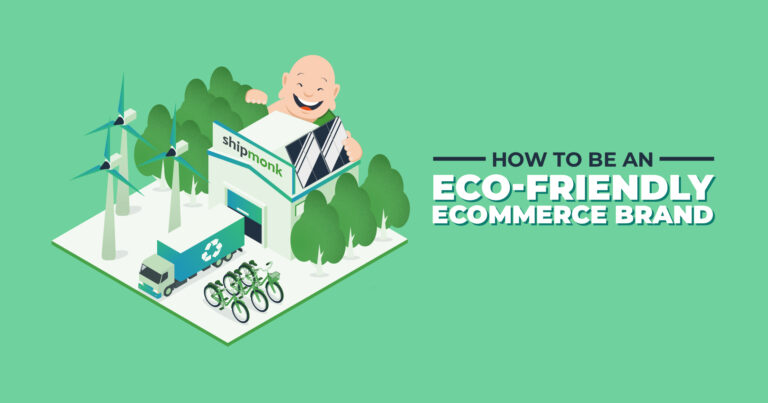How to Improve Shipping Speed in eCommerce
When you own an eCommerce company, one of the last things you’ll want to typically think about is logistics. Nowadays, however, the pressure is higher than ever to deliver (pun intended) the best experience to your customers throughout the purchasing process.
One segment of this process in which many eCommerce companies can improve significantly is the shipping speed to their customers! Thanks to Amazon Prime, consumers now expect to receive their orders within 2 to 3 days.
I’m sure you’ve been there before: you order a product you’re incredibly excited about. However, as time wears on and your tracking number updates at a glacial pace, your enthusiasm wanes considerably. So much so, in fact, that by the time you actually receive your product, you barely even remember ordering it in the first place.
Why not capitalize on your customers’ excitement by helping them receive the product as quickly as possible? In this article, you’ll learn four key ways to increase your shipping speed.
Same-Day Picking
When your customer places an order during her lunch break, one of the first things you can do to reinforce a positive purchase experience is let her know that her order was picked that day. Most every shopping cart has a notification option that enables the customer to receive notifications throughout the fulfillment process. Some of these stages include when the order is submitted for fulfillment, when it is shipped, when the labels are printed, etc. Even if you elect to manually turn these notifications off, it is indeed best practice to either work with a fulfillment company that offers same-day picking or to pick the product yourself before your carrier or post office’s closing time if you are going the self-fulfillment route.
The advantage of same-day picking is obvious. Many companies have a 24-hour pick policy. In other words, your customer who orders a product during her lunch break on Monday may not even have her order picked until the same time on Tuesday! This one-day delay can cost you a full day in shipping time, regardless of what carrier you use.
While same-day picking is desirable for the customer, you will need to set expectations properly if you elect to offer this service. If you guarantee same-day picking up through and beyond your carrier’s delivery window, the added value isn’t particularly great. In other words, you want to advertise same-day picking only if you can reliably get that order shipped out to the carrier that same day. A reasonable time window for most businesses (fulfillment companies or self-fulfilling eCommerce stores) is 3-4 hours. In other words, if your carrier picks up at 5 p.m., all orders for same-day picking must be in by roughly 1pm. This buffer zone will also provide the customer a window of opportunity in which to cancel or modify their order.
Multiple Locations
Fulfilling orders from multiple locations is a surefire way to increase shipping speed, although it may not be the most cost-effective. Shipping speed (and pricing) is frequently dictated by something called “zones”, which are latitudinal and longitudinal separations of the country. Depending on how many zones your shipment will have to cross will affect either your pricing, your shipping speed, or both!
A package going from Miami to Seattle will have to cross several zones, and will likely take the “high-end” of your delivery expectation. So, for instance, if your carrier offers you a 3-5 business day shipping estimate, you can bank on a Miami-Seattle run taking 4-5 days.
But what if you had a warehouse in Miami and in Los Angeles? If you can fulfill the order from the Los Angeles warehouse, your shipment to Seattle won’t take 5 days. In fact, it is not at all uncommon for short-zone shipments to overperform the carrier’s expectation. It is not beyond the realm of possibility that such a shipment could take a mere 2 days!
eCommerce stores who also have brick and mortar locations can offer in-store pickup or direct shipping to local customers. This can save time spent waiting for a shipment from your warehouse, depending on the distance to your retail location.
Naturally, shipping from multiple warehouses is cost-prohibitive for most eCommerce companies. However, partnering with a fulfillment center that has multiple locations can essentially allow you to benefit from their size and scope. You would simply ensure that you have inventory at both fulfillment centers and let them take care of the rest!
Leverage Expedited Services
We’ve all heard of FedEx overnight. It’s a fabulous service that allows you to ship a parcel from one part of the country to anywhere else in the country overnight. Obviously, the cost of most overnight services is incredibly high. The good news, however, is that the price for the middle tier of expedited shipping is extremely reasonable.
It will be difficult (although not impossible) for an individual eCommerce store to receive majorly discounted rates from services like FedEx, DHL, and UPS with regards to their expedited services. However, with a fulfillment center, you will be able to take advantage of their volume based discounts. You may find that shipping options such as two-day shipping that would have cost you $10 or more now cost you only $6-$7. These savings can be passed on to your customer, and they can enable you to guarantee a quicker delivery.
Consider, for example, FedEx’s 2-Day delivery service, “FedEx 2Day”. If you and your competitor are offering a similar product, and you charge $25 for the product with shipping not included and your competitor charges $35 for 7-day free shipping, you could have room for a competitive advantage by pricing expedited shipping into your product. So, if shipping costs you $6 to ship FedEx 2Day, you might consider sacrificing one dollar of margin to ultimately charge $30 for 2-day shipping. You’ve now undercut your competitor on both price and speed, and you are in a phenomenal position to win more customers as a result!
Expedited services are a useful way to increase shipping speed, but they absolutely have their limitations. These services can be cost-prohibitive if the size of the product grows too large. Furthermore, they are expensive and are best suited towards premium products with relatively comfortable margins.
Delayed Notifications
At the beginning of this article, we spoke a bit about same-day picking. However, an alternative to same-day picking is something called a “delayed shipping” notification. Both same-day picking and delayed shipping notifications are two sides of the same coin, and they both revolve entirely around setting the right expectation for your customers.
Consider two customers living next door to each other. Both place an order on Monday at noon. The first customer, let’s call her Alice, has the expectation confirmed that evening at 6pm that her order was picked, and then receives a shipping confirmation the next day on Tuesday. The second customer, let’s call him Brian, receives confirmation that his order has shipped on Wednesday. Both Alice and Brian ordered 3-5-day shipping. Both clients receive their packages on Friday.
Who do you think had the better experience, Alice or Brian? Neither choice is incorrect here, but one thing is certain: the perceived value of Brian’s shipping experience was much better. So, since both customers live in the same zone and ordered the same product on the same day, why did Brian’s order take only 2 days to deliver, whereas Alice’s took 3 days?
The truth is that both packages took 3 days to deliver. The difference is that Brian had a delayed shipping notification – he was not notified until the day after his package had already shipped. In doing this, the company traded off on the processing time. Remember, delaying shipping notification means that the pick/pack process will be perceived as taking longer. Find out which option is most palatable to your customers and go with it!
Delayed notifications are also a great option for subscription boxes and crowdfunding campaigns because the customer isn’t expecting the item to be shipped right away as they would expect with a typical ecommerce order. For example, let’s say that a customer places an order for a subscription box from a company that advertises that it ships monthly subscription boxes out to customers on the 1st day of each month. In an effort to reduce shipping costs and increase efficiency, the company (or its third-party fulfillment center) can kit and assemble all of the boxes and ship them on the 29th using a 4-5 day shipping method and simply delay sending the shipping confirmation until the 1st, giving the customer the perception that their package arrived in 2-3 days.
Improve Your Processes
Evaluate your picking, packing, and shipping processes to see if you are using your time wisely. For example, paper pick lists are slow and prone to errors, so consider upgrading to digital barcodes and scanners to speed things up. You can also organize your inventory and packing areas to minimize wasted steps.
Instead of calculating your shipping per order, you can also assign your items a precalculated shipping weight. From there, you can easily determine your shipping weight based on the delivery method and carrier, making shipping much faster.
Conclusion
Increasing shipping speed is a growing priority throughout eCommerce. With Amazon’s latest advances, same-day shipping is becoming a reality for many customers. But if your product quality and brand perception is high, you don’t need to succumb to the pressure of competing with giants like Amazon in speed. As I hope you’ve seen, there are plenty of things that you can do to increase shipping speed without breaking the bank.



